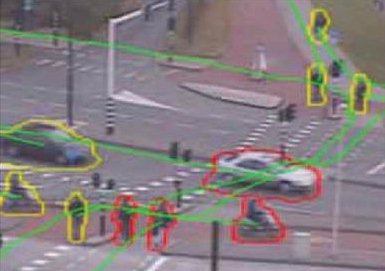
With the sophistication of video management and analytics software increasing and a surge in high-quality IP cameras, the video surveillance market is in the midst of a technological evolution. As a result, ABI Research, the leader in transformative technology innovation market intelligence, forecasts global value added services market revenues will top $10 billion by 2021. Data and analytics services, as well as device and application platform services, show the strongest revenue growth within the non-consumer video surveillance market.
?With hardware revenue margins destined to decline, many industry players are adopting a more service-oriented approach to find new revenue opportunities,? says Eugenio Pasqua, Research Analyst at ABI Research. ?The intersection of video surveillance and IoT opens the doors to a whole new set of players.?
The idea is that enterprises can derive valuable insights from the data generated by video surveillance systems, which the organizations can then use to drive their operational, marketing, and merchandising decisions forward. ABI Research anticipates that an increasing number of vendors will offer solutions that integrate operation data from a variety of sources, including cameras and control systems.
Three trends in the video surveillance market clearly depict the convergence of IoT and video surveillance: Video Surveillance as a Service (VSaaS), the integration and unified management of video surveillance within other systems, and the use of video analytics as a business intelligence tool. VSaaS, specifically, is an emerging business model that enables access to the system and its services from virtually anywhere, while relieving user organizations and enterprises from service management.
While large-scale adoption of a fully cloud-based VSaaS model may not yet be viable due to its high bandwidth requirements, many leading vendors, like Genetec, Milestone Systems, Honeywell Security Group, and Aimetis, are incorporating VSaaS functionalities into their traditional video management solutions. The vendors are then integrating and connecting them with other security systems like access control, fire detection, and building management.
?The increasing demand of IT and physical security convergence and video integration will provide a fertile ground for players with a good IP understanding,? concludes Pasqua. ?This will ultimately push many firms to closely collaborate and reduce the complexity in delivering a viable end-to-end solution.?
As for video analytics, Pasqua believes that its use as a business intelligence tool in addition to providing security and loss prevention will be a major driver for growth in the sector. The general desire to achieve a higher ROI from video surveillance systems will push more customers to implement such solutions, particularly in the small-to-medium business segment in which security budgets are typically limited.
And while the majority of surveillance cameras currently installed in the enterprise environment still use fixed line analog connections, this will not hinder the overall market. According to ABI Research, both wired and wireless IP connections will continue to grow at a double-digit CAGR for at least the next five years.
These findings are part of ABI Research?s Internet of Everything Service and Industrial Internet Service, which include research reports, market data, insights, and competitive assessments.
Source: abiresearch.com
